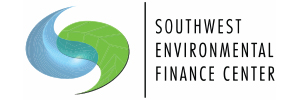Spring Point Partners Funding Research
Project Brief
Infrastructure requires funding – funding for the day to day operation and maintenance activities as well as funding for the larger expenses, such as asset replacements, asset rehabilitation, condition assessment, asset monitoring, asset repair, and interventional maintenance (major maintenance projects that are intended to intervene at a particular point in the asset’s life and bring it back to usefulness). Outside entities, such as the State Revolving Loan Fund (SRF) provided by the Environmental Protection Agency, but administered by each state, will fund new assets (e.g. asset replacements, new treatment plants, new piping). We are examining ways in which the funding resources can be used more efficiently and effectively to achieve positive results for everyone – funders, utilities, and customers. Funding efficiency is an important goal in this time of revenue scarcity and rising costs. This approach is needed because there are insufficient resources to address all of the water and wastewater needs across the country.
There are some institutional factors that make it more difficult to fund optimized projects, those that include a range of solutions from repair, to rehabilitation, to replacement, rather than new projects. These include the complexity of the funding process, the requirement for the states to spend the money within two years, the numerous federal cross-cutting requirements, the flexibility of the program which is both positive and negative, and the difficulty in accessing SRF information.
We are examining potential solutions and options by reviewing information from all 51 water and wastewater SRF programs. As part of this process we developed a web based resource to allow anyone (water utilities, states, funders, regulatory agencies) with an interest in SRF information to be able to find it easily and in one place. A user can click on a state in the map and find the documents for each state’s SRF program for water and wastewater. The switchboard will be added to over the next phases of the project to include elements such as business case tools, case studies, and examples of options other than new assets. This information is being examined to determine how states incentivize and disincentivize certain behaviors. Sharing this information will help states determine options for the future.
For example, requiring utilities to not only have an Asset Management plan, but to show that they use it to make maintenance and funding decisions could help utilities understand their needs and could also help funders evaluate funding needs. Requiring a written business case evaluation would be a further aid to both funders and utilities in making the loans more cost-effective. A business case evaluation should always show the costs and benefits of new construction vs remodeling, upgrading, or increased maintenance; and fix-it-first should be a requirement in all cases.
We will be developing case studies and information to promote a more cost-efficient way of funding capital projects. We will also be providing training to states and water utilities.
